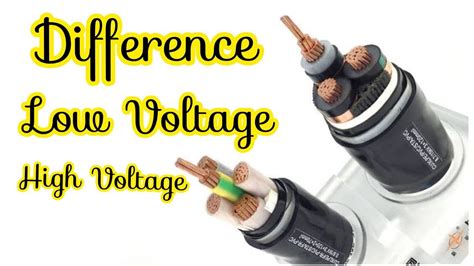difference between hv and lv cables | substation hv cable difference between hv and lv cables For that, you first need to disconnect the supply voltage given to the transformer . $13K+
0 · substation hv cable
1 · lv vs hv cables
2 · hv cables explained
3 · hv cable definition
4 · deep dive hv cable
Reasons to Buy a Rolex Submariner Date 16610. Last reference with an aluminum bezel; Vintage flair and suitable for everyday wear; Anniversary "Kermit" edition with green bezel; Precise, in-house caliber 3135; Excellent financial performance
In this post, we will see some basic differences between two widely used cables – HV (High Voltage) and LV (Low Voltage). Both these cables use copper and aluminium as conductor alloys. Table of Contents. HV Cables. HV cables are used for a very high voltage transmission; .For that, you first need to disconnect the supply voltage given to the transformer .In this post, we will see some basic differences between two widely used cables – HV (High Voltage) and LV (Low Voltage). Both these cables use copper and aluminium as conductor alloys. Table of Contents. HV Cables. HV cables are used for a very high voltage transmission; typically used in power plants and transformers.LV cables are low voltage cables that are designed to transmit electrical power at voltage levels up to 1000 V. They are typically used for short-distance power transmission and distribution, such as within buildings and homes. In contrast, HV cables are high and medium-voltage cables that are designed to transmit electrical power at voltage .
When it comes to electrical systems, understanding the difference between high-voltage (HV) and low-voltage (LV) cables is crucial. Both cables play significant roles in power distribution and transmission, but they have different purposes and distinct characteristics. The primary distinction between high-voltage (HV) and low-voltage (LV) cables lies in their construction and insulation properties. High-voltage cables are designed with multiple semiconductor and shielding layers, which significantly exceed the .
In a low-voltage (LV) plastic-sheathed cable with conductor cross-sections of up to 10 mm2 per conductor or in high-voltage (HV) cables (Figure 2), the lion’s share of the cross-sectional area is occupied by the insulating material.High-voltage cables, for example, are built to handle higher electrical loads and are often used for long-distance power transmission, while low-voltage cables are more suited for residential and smaller commercial applications. Knowing these differences not only ensures efficiency but also promotes safety across your electrical projects.
substation hv cable

For example, high voltage is excellent for powering large devices, while low voltage is better suited for smaller ones. This is one of the key differences between high and low voltage. In this guide, we’ll break down the pros and cons of . Two primary categories of these cables are high voltage (HV) cables and low voltage (LV) cables. Despite their shared purpose of conducting electricity, they are markedly different in terms of structure, materials, applications, and safety considerations. By understanding the characteristics and differences between low, medium, and high voltage cables, people can better select and apply cables that suit their needs, ensuring the safe and stable operation of power systems.
High-voltage and low-voltage cabling refer to different types of electrical cables used for specific applications. The key differences lie in their voltage ratings, insulation requirements, and the types of equipment they are designed to connect.
In this post, we will see some basic differences between two widely used cables – HV (High Voltage) and LV (Low Voltage). Both these cables use copper and aluminium as conductor alloys. Table of Contents. HV Cables. HV cables are used for a very high voltage transmission; typically used in power plants and transformers.LV cables are low voltage cables that are designed to transmit electrical power at voltage levels up to 1000 V. They are typically used for short-distance power transmission and distribution, such as within buildings and homes. In contrast, HV cables are high and medium-voltage cables that are designed to transmit electrical power at voltage .When it comes to electrical systems, understanding the difference between high-voltage (HV) and low-voltage (LV) cables is crucial. Both cables play significant roles in power distribution and transmission, but they have different purposes and distinct characteristics. The primary distinction between high-voltage (HV) and low-voltage (LV) cables lies in their construction and insulation properties. High-voltage cables are designed with multiple semiconductor and shielding layers, which significantly exceed the .
In a low-voltage (LV) plastic-sheathed cable with conductor cross-sections of up to 10 mm2 per conductor or in high-voltage (HV) cables (Figure 2), the lion’s share of the cross-sectional area is occupied by the insulating material.High-voltage cables, for example, are built to handle higher electrical loads and are often used for long-distance power transmission, while low-voltage cables are more suited for residential and smaller commercial applications. Knowing these differences not only ensures efficiency but also promotes safety across your electrical projects. For example, high voltage is excellent for powering large devices, while low voltage is better suited for smaller ones. This is one of the key differences between high and low voltage. In this guide, we’ll break down the pros and cons of .
Two primary categories of these cables are high voltage (HV) cables and low voltage (LV) cables. Despite their shared purpose of conducting electricity, they are markedly different in terms of structure, materials, applications, and safety considerations. By understanding the characteristics and differences between low, medium, and high voltage cables, people can better select and apply cables that suit their needs, ensuring the safe and stable operation of power systems.
lv vs hv cables

shoes synthetic
hv cables explained
Rolex Datejust. Datejust Collection Key Features: - Round waterproof Oyster case without crown guards. - Screw-down Twinlock winding crown. - Automatically changing calendar complication. - A date window on the dial at three o’clock location. - .
difference between hv and lv cables|substation hv cable


























